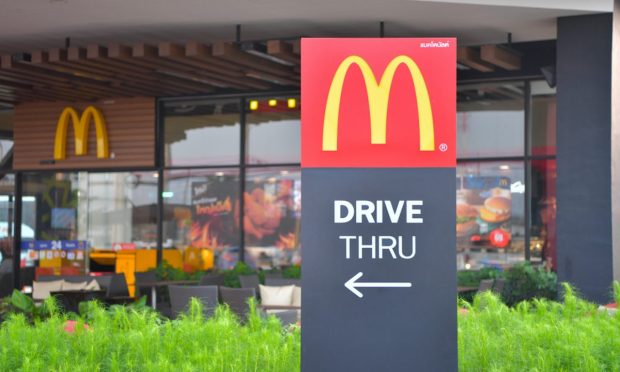Restaurant Roundup: DoorDash Glitch Costs Thousands of Dollars

A DoorDash glitch on Thursday (July 7) had customers hauling in free food and beverages, up to thousands of dollars’ worth.
As The New York Post reported Friday (July 8), Twitter users discovered that, for the time being, they were able to place DoorDash orders without being charged for their purchases. As such, people placed liquor purchases valued at thousands of dollars, among other orders.
As MEAWW noted, one Twitter user, @only1briaaa, wrote, “doordash glitching i just got hella free food & liquor off of there THANKKKKK YOUUU.”
“On the evening of July 7th DoorDash experienced a payment processing issue, and as a result, some users were able to check out without an authorized form of payment for a short period of time,” a DoorDash spokesperson said in a statement to The Post. “We were subsequently notified that some users were placing fraudulent orders, and we immediately corrected the issue.”
The spokesperson added that the company is “actively canceling fraudulent orders” and that it is “in touch with merchants” to compensate them for orders for which they were not paid.
As it is, DoorDash operates at a loss, with the cost of delivery labor and of its investments outweighing revenue from the commission it charges restaurants and the fees it charges consumers.
“We’re running the business with the objective of maximizing scale so that in the long term, we maximize profit dollars,” the company’s CFO Prabir Adarkar told analysts on a call in May discussing the company’s first-quarter 2022 results. “These categories that we’re operating in, they’re very large, they’re very underpenetrated today, and that’s why we’re investing to build scale. And what we look for is this combination of strong signals of product market fit, as well as a path to attract unit economics.
Dave & Buster’s Opens Frictionless C-Store
Restaurant and entertainment chain Dave & Buster’s is testing grab-and-go food options in addition to its typical sit-down dining offerings.
On Tuesday (July 5), the brand announced that it is opening a cashier-less checkout “MicroMarket” called “Game & Go” at a location in Hollywood, Florida, in partnership with beverage corporation The Coca‑Cola Company and frictionless checkout technology company Zippin.
“Innovation is critical in the entertainment business, and our new Game & Go MicroMarket is truly state of the art,” Brandon Coleman III, senior vice president and chief marketing officer of Dave & Buster’s, said in a statement. “Our F&B team partnered closely with The Coca-Cola Company to bring this exciting new technology to life, and I think the guest is really going to enjoy the new food and drinks, as well as frictionless payment.”
The small market is inside of the full-service restaurant, and it sells grab-and-go foods and beverages from Coca-Cola’s brands. It uses Zippin’s artificial intelligence (AI), machine learning, computer vision and sensor technology to enable consumers to pick items up off the shelves and walk out, having the products automatically charged to their accounts.
The goal of the partnership is to offer a quicker alternative for customers who want to have a quick bite and engage with Dave & Buster’s entertainment offerings without sitting down for a restaurant meal.
Around the world, frictionless checkout has been becoming more common. Most recently, in late June, Rewe, a major German grocery chain, which operates around 6,000 stores in its home country and 3,500 in other markets, announced its second autonomous checkout store in partnership with Israel-based computer vision company Trigo.
Related news: Grocers Leverage Cashier-Less Checkout as Data Opportunities Emerge
Amid Rising F&B Prices, McDonald’s Locations Pull Dollar Drinks
As food prices skyrocket, quick-service restaurants (QSRs) are forced to carefully consider their pricing and their deals and offers. Many locations of QSR giant McDonald’s have been finding that, in this inflationary environment, it no longer makes sense to offer any-size soft drinks for just one dollar.
The Wall Street Journal reported last Friday (July 1) that in 16 of the restaurant’s 56 markets, local co-ops voted to advertise value menus instead of dollar drinks to enable them the freedom to raise the prices of beverages.
“Franchisees set prices and have the flexibility to create promotions that will drive demand locally,” the restaurant brand told the outlet.
The Consumer Price Index for All Urban Consumers (CPI-U), reported by the U.S. Bureau of Labor Statistics (BLS) last month, found that in May, food prices rose 10.1% year over year, well above the change in prices for all items across categories, +8.6%.
Still, restaurants, for the most part, have been taking on much of this inflationary pressure themselves rather than passing it on to consumers. Food away from home (i.e., restaurant) prices only rose 7.4%, while food at home (i.e., grocery) prices rose 11.9%. This move on McDonald’s franchisees’ parts suggests that restaurant’s ability to absorb these price increases may be being pushed to its limit.
